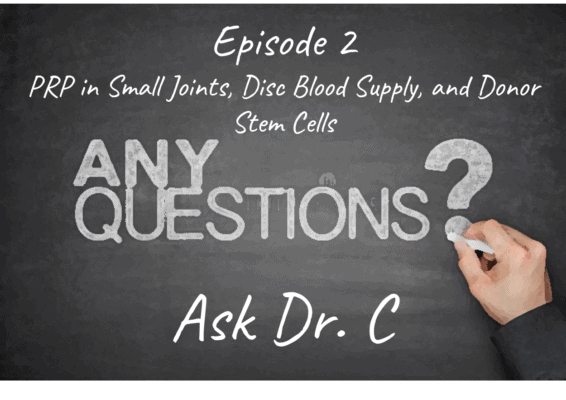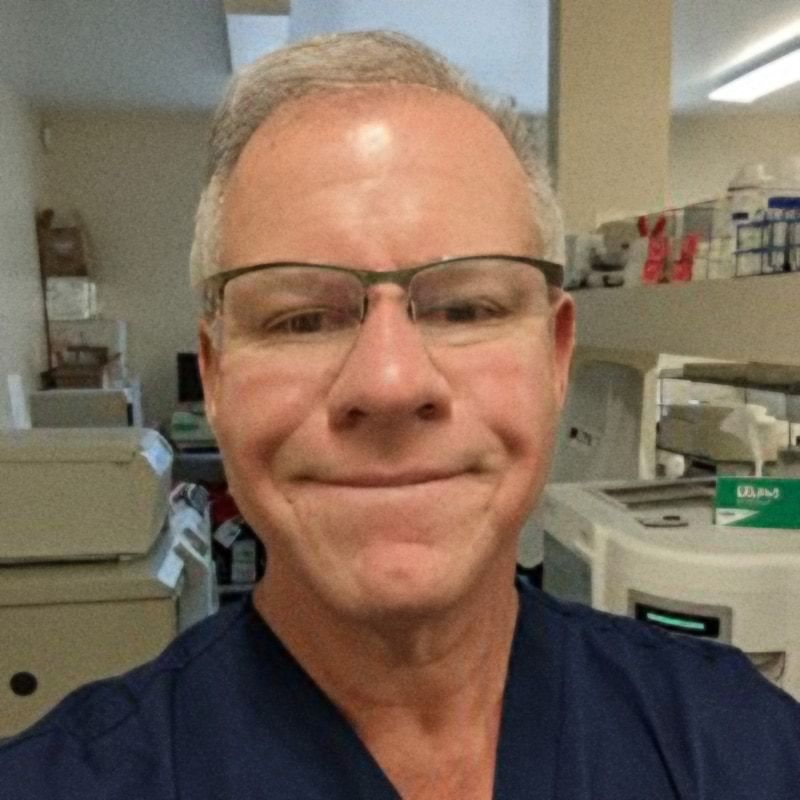Ask Dr. C – Episode 2

There are still a slew of great questions coming in for “Ask Dr. C”, so I thought I would go with a second episode to get them answered. Again, I love seeing what patients ask as it lets me know whether my educational efforts are succeeding or where I need to work harder to get the message out. Let’s dig in.
Do PRP treatments work as well in the small joints of the fingers and toes as they do in large ones?
To review, PRP stands for platelet-rich plasma. This is where the doctor concentrates blood platelets laden with healing growth factors and injects those to help tissue heal. The most common use of PRP to treat orthopedic injuries is for knee arthritis and tennis elbow. However, PRP is really used all over the body by Regenexx clinics. That includes smaller joints like the hands or facet joints in the spine. Below is a shortlist of every condition where we use PRP:
- Arthritis of the knee, hip, shoulder, hands, wrist, elbow, ankle, feet, TMJ, spinal facet joints, and SI joints
- Degenerative disc disease, sciatica, low back, and neck pain
- Lax ligaments or damaged ligaments like knee ACL/MCL, or the commonly injured outside ankle ligaments
- Damaged tendons like tennis elbow, golfer’s elbow, rotator cuff tears, etc…
- Damaged meniscus or spacer structures like shoulder or hip labrum
Because discs don’t have any blood supply can stem cell injections help and if so how?
Spinal discs lose their blood supply when we age past our teenage years. After that, the spinal discs, which act as shock absorbers between the neck and back bones, get their nutrition from something called “imbibition”. This is basically a sponge-like action that pumps fluids through the disc as we walk.
As the disc degenerates, it loses chemicals inside it called glycosaminoglycans (GAGs). These hold onto water giving the disc it’s shock-absorbing abilities. Once the cells that produce this chemical die off, the disc can no longer hold onto water and may slowly deflate over time, leading to decreased disc height.
So what can stem cells do for a spinal disc? I first injected the disc with stem cells in 2005/6, long before anyone had ever conceived of doing it, and I expected them to rebuild the deflated disc as that had happened in animal experiments. That didn’t happen in humans. Yet, through the years, we learned that stem cell injections in the disc were good for:
- Torn and painful discs
- Disc bulges
How could this work when the disc has no blood supply? Stem cells secrete a growth factor called VEGF, which can build new blood vessels. If you want to learn more about stem cells and discs, please see my video below:
I am confused about whether donated stem cells are living. I know of one prominent doctor who uses donated cells exclusively, eschewing bone marrow as the source. Please clarify whether donated stem cells will work.
No, there are no products in the US that contain living stem cells from a donor. Hence if your “prominent doctor” is telling you that he or she is performing stem cell injections from a donor, they aren’t keeping up with the research in this area. So while they may be expert in their area of medicine, they are not an expert in regenerative medicine.
To learn more on this topic and to see the supporting data that shows that the donor birth tissue products used by clinics claiming to contain stem cells do not contain any living stem cells, see my video below:
The upshot? Thanks for another round of great questions! Keep them coming!

If you have questions or comments about this blog post, please email us at [email protected]
NOTE: This blog post provides general information to help the reader better understand regenerative medicine, musculoskeletal health, and related subjects. All content provided in this blog, website, or any linked materials, including text, graphics, images, patient profiles, outcomes, and information, are not intended and should not be considered or used as a substitute for medical advice, diagnosis, or treatment. Please always consult with a professional and certified healthcare provider to discuss if a treatment is right for you.
